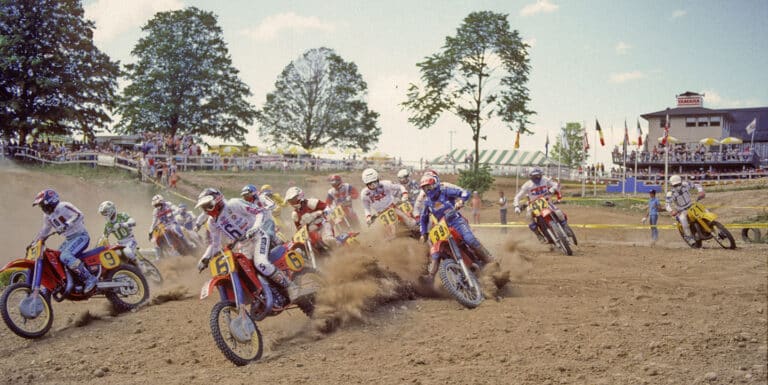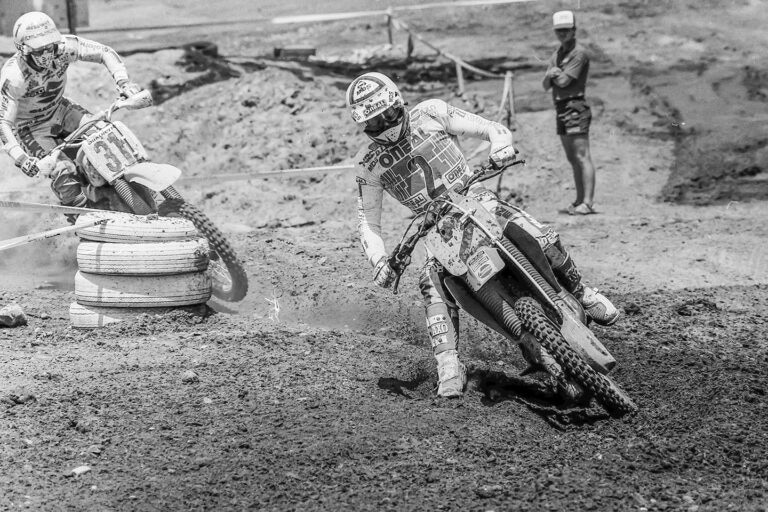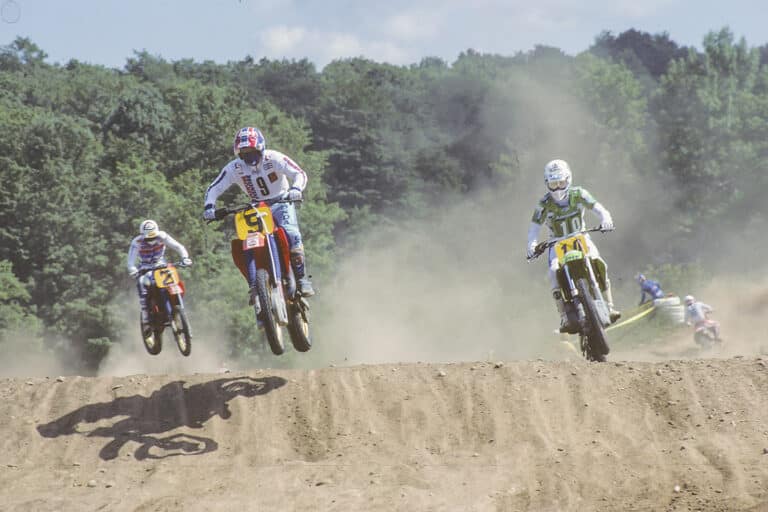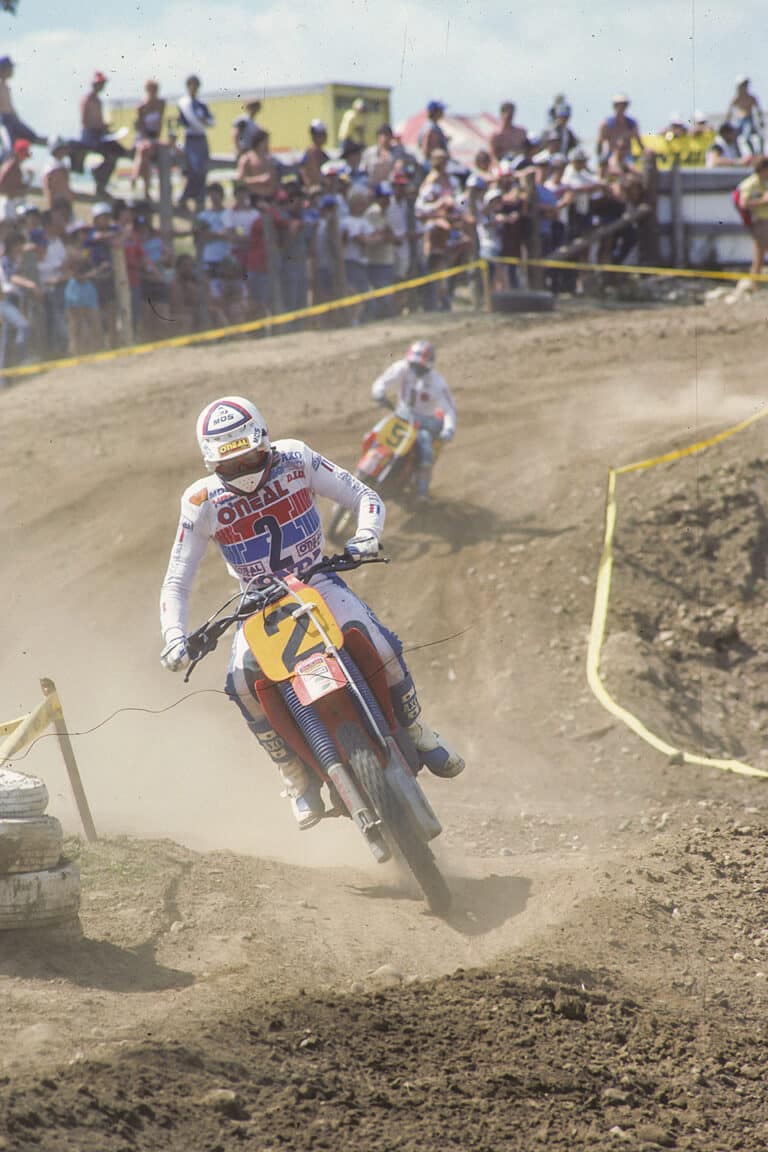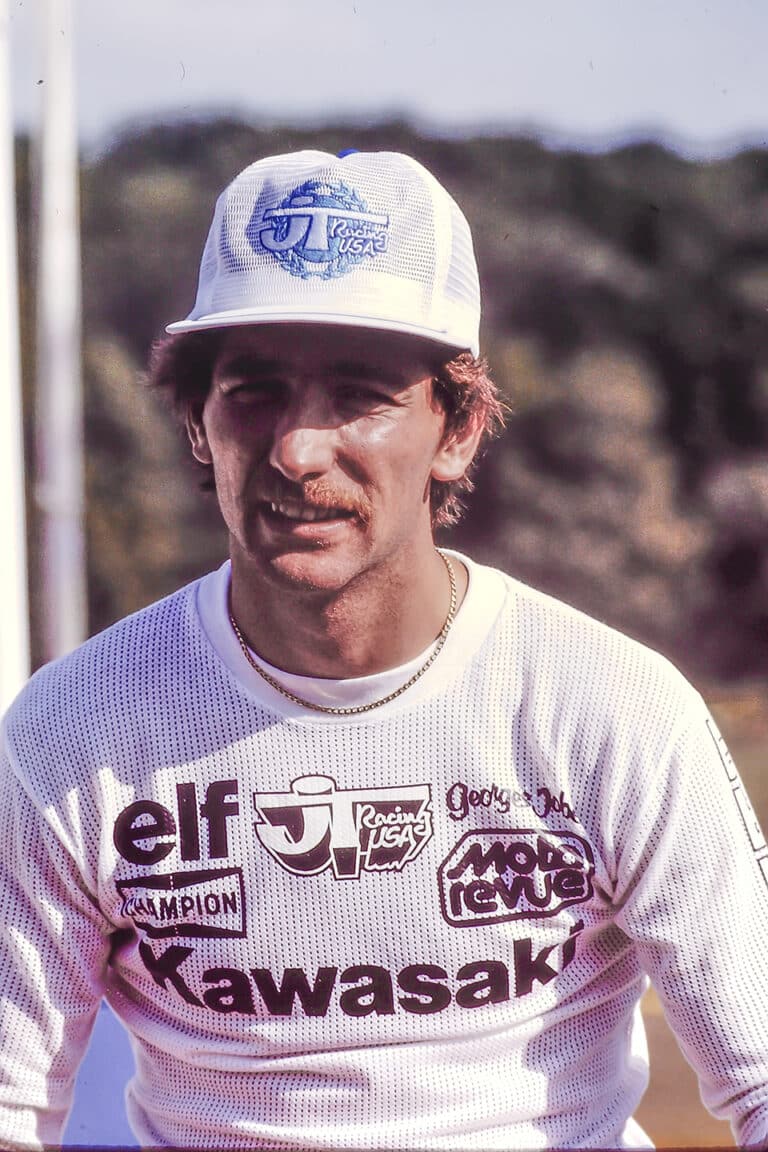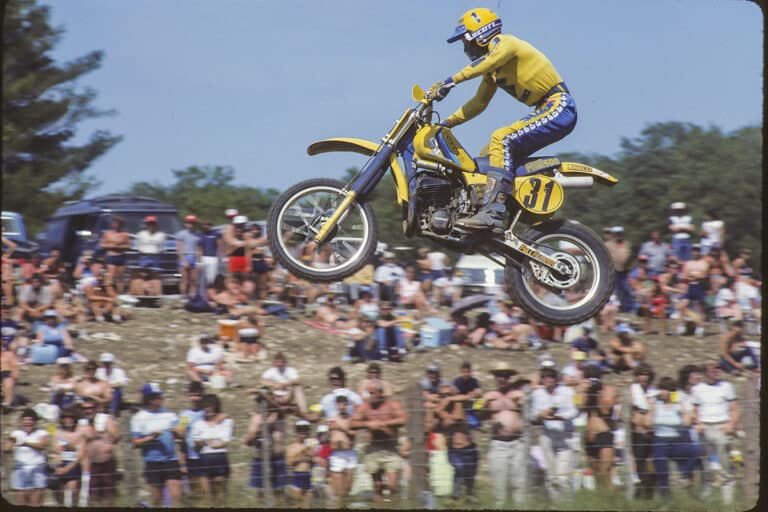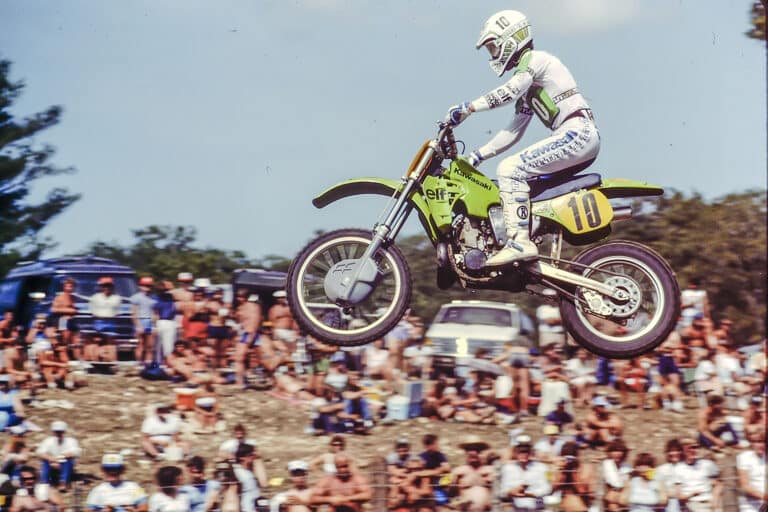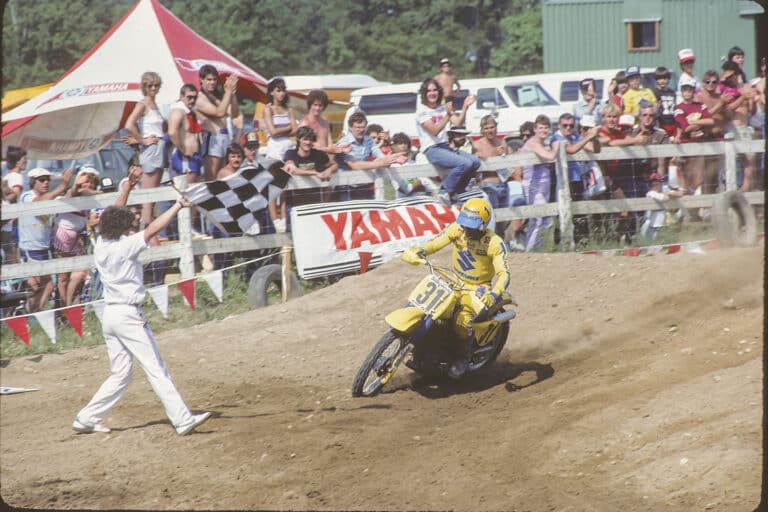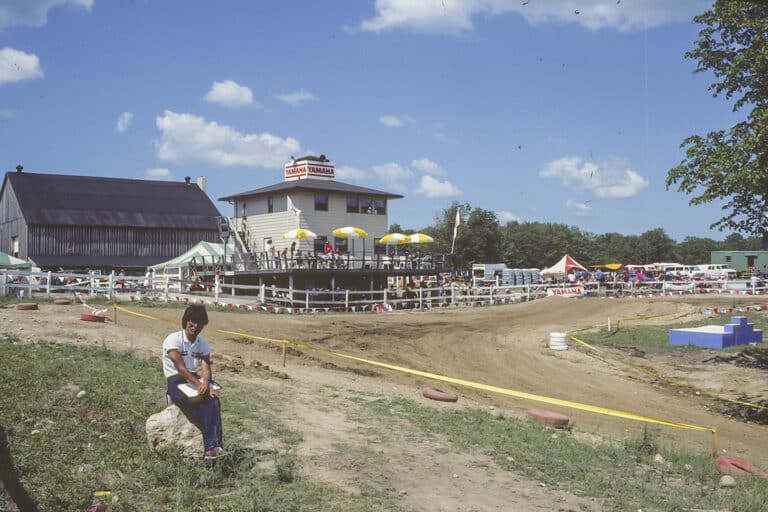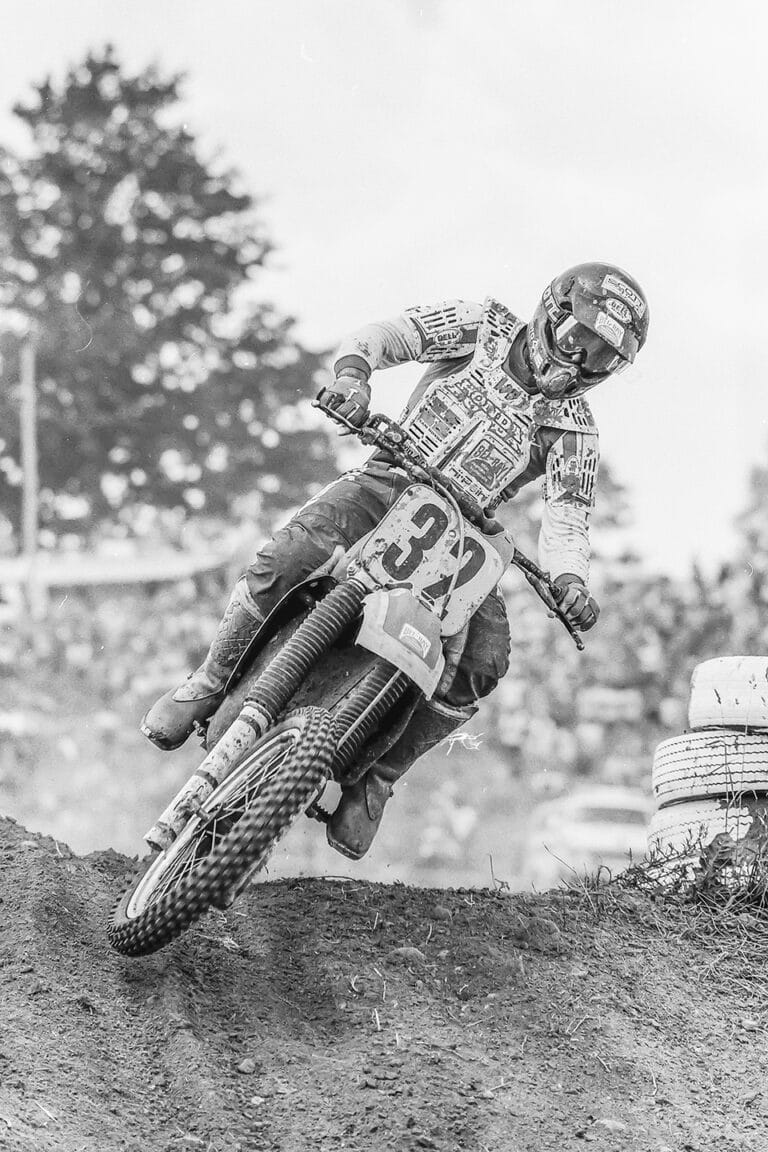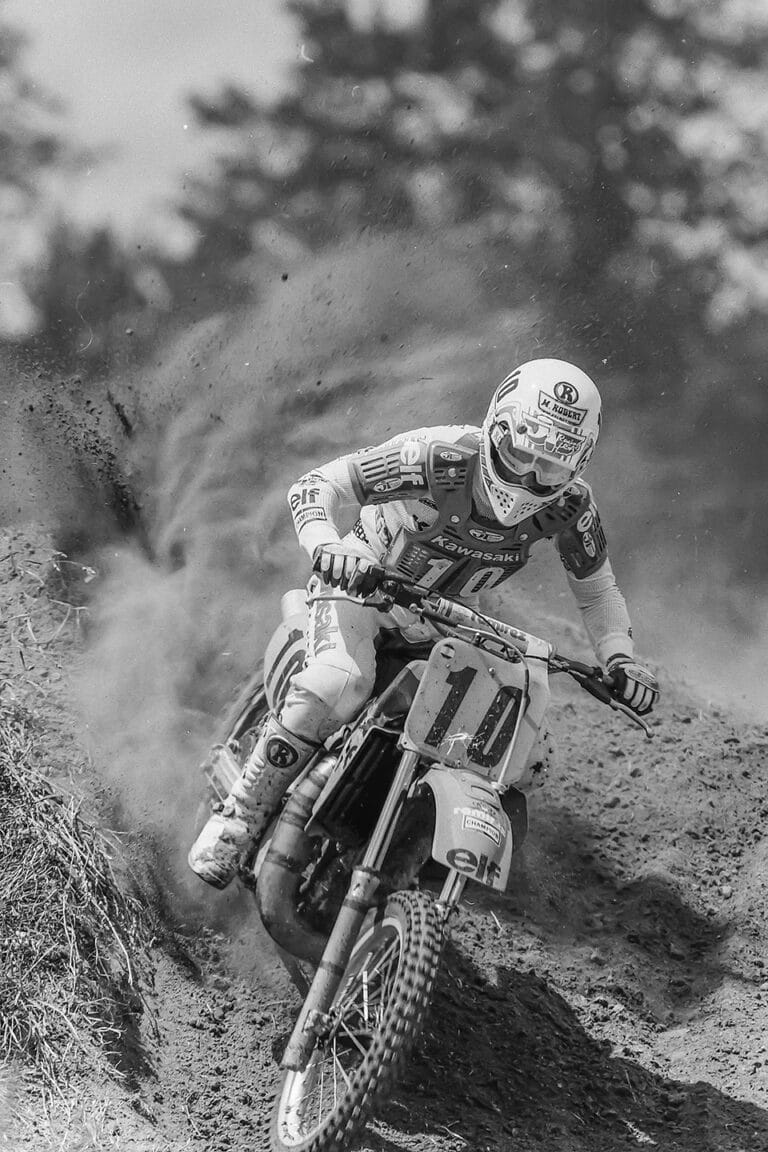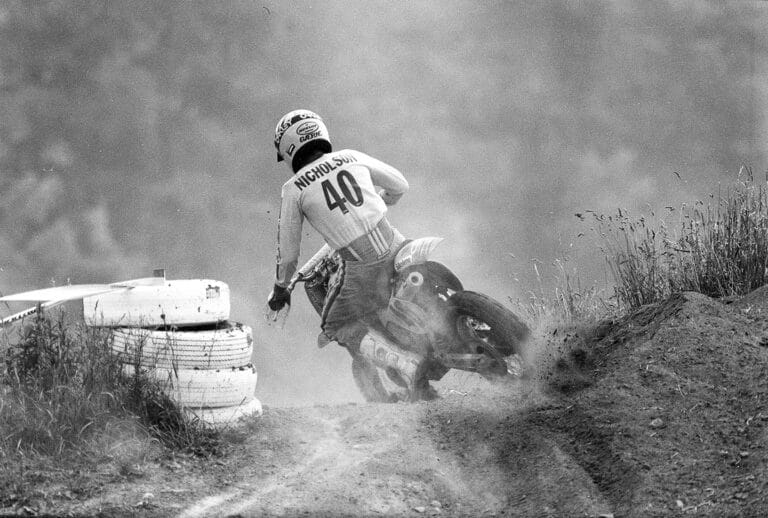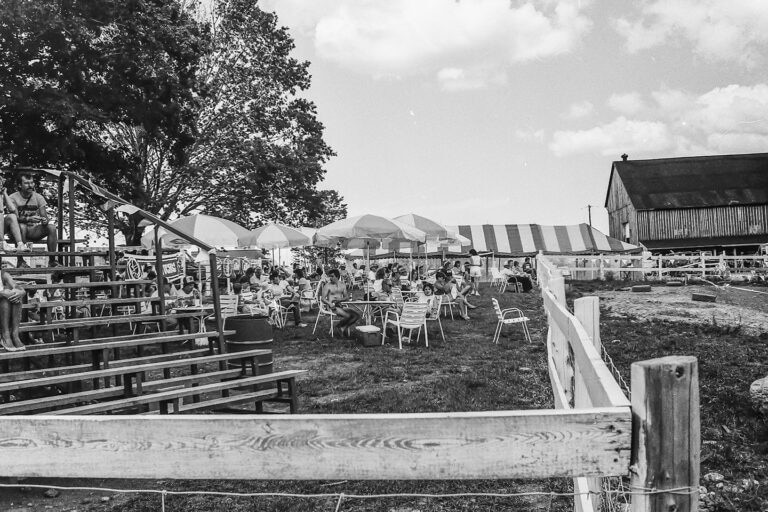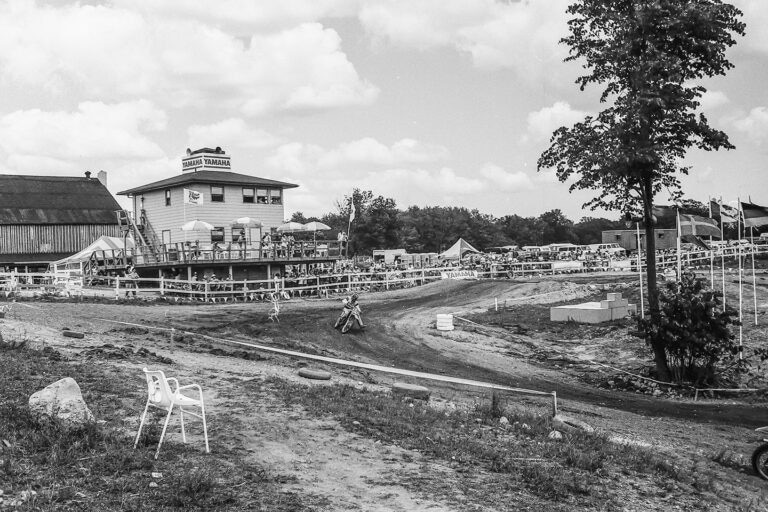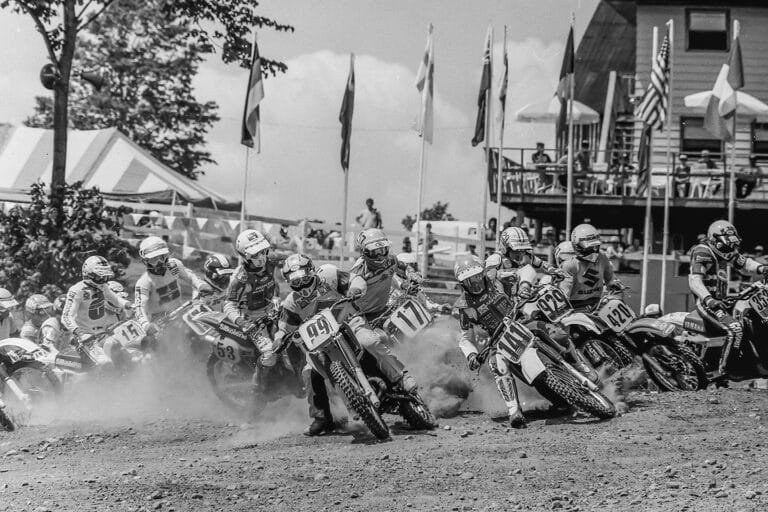Canada Day
BY Mike McGill. First Published in MXP magazine 2016 issue 6
Photos by Bill Petro / CMSA
Throughout the history of Canadian motocross there have been plenty of big races. During the 1970’s Canada played host to the greatest stars in GP motocross on several occasions. We had quite a string of big events as a mater of fact. None bigger, perhaps, than the 500cc GP that took place at the famous and legendary Copetown track just outside of Hamilton, Ontario in 1975. That version of the Copetown track was unfortunately bull-dozed in 76 and in an unprecedented move the Canadian round of the 500cc GP World Championships was held on the infield of the Road Circuit at Mosport Ontario that summer. In 1977 the race went to Quebec. San Gabriel de Brandon to be precise and then back to Mosport after a year’s absence in 1979. This was indeed the “Golden Age” of motocross not only in Canada but North America in general and these races really were big events which saw the GP stars of the day do battle in front of very large and enthusiastic Canadian crowds.
For a while it seemed as if the last race at Mosport might have been the end of GP racing in Canada as there was a bit of a break in World Championship competition following the 1979 event. Indeed, the top European stars of the GP motocross circuit did not come back to Canada again until 1984. That’s when Motopark, located in Chatsworth Ontario played host to a round of the 500cc GP Series. And that’s where this story begins.
It actually seemed kind of odd that a GP would come back at all to Canada at that time. As the mid 80’s approached the industry in general was facing a bit of a down turn. And while the 500cc World Championship series was still the pinnacle of the sport at this time it was definitely starting to lose a bit of it’s lustre. Especially in America, where after the initial honeymoon period during the 70’s was over the fans seemed to have turned their collective backs on GP racing. Perhaps it was for this reason that the FIM approached Motopark with the idea of having another event in Canada. Maybe it was their thinking that, another successful event in Canada, similar to the ones held in the 70’s, could possible open some fresh doors and kick-start GP motocross in North America in general. Or maybe they were just looking for some quick cash and they though Canada might be able to provide that for them. Who knows but at the time the only other World Championship GP Motocross events in North America were the 250GP at Unadilla, New York and the 500GP in Carlsbad, California. A successful race in Canada could possibly secure a spot on the schedule for years to come.
With this strategy in mind Motopark owner Carl Bastedo and his crew of workers set about the task of transforming the Motopark track into a facility worthy of holding a World Round of GP Motocross. “I was on quite a roll at the time” recalls Bastedo. “I had been promoting the Toronto Supercross for several years already at that point and it had been quite successful. That coupled with the bike shows that I organized and Motopark in general had done really well for me and I saw the GP as really just some icing on the cake.” Unfortunately, Yamaha was the only significant sponsor that came on board for the event and Bastedo soon realized that much of the cost for the race was going to have to be absorbed by him personally. Undaunted the crew carried on and gave the track and facility at Motopark a serious make-over.
First item on the list was the pits. The GP paddock area had to be fenced in. That fencing that was erected for the GP is still in place to this day. But it wasn’t just the pits. The whole track had to be fenced as well which was obviously a large expense and the track itself had to be lengthened to comply to GP standard lap times. In order to accomplish this a large portion at the back south part of the property was cleared and turned into what came to be known as the “GP section.” This part of the track had plenty of elevation changes and was really cool. Lot’s of amateur racers got to try it out in the years following the GP but it has not been used now in a long time. On top of that hundreds of truck loads of sand were brought in to completely re-surface the track. Anyone who has ever raced at Motopark can certainly tell you that rocks can sometimes be problematic but for the GP in 84 there was nary a rock in sight when the factory teams pulled into the facility. The absence of rocks didn’t last long of course but the track was in truly fantastic shape for the race. So much sand had been dumped onto the racing surface as a matter fact that when a European moto-journalist questioned former World Champion David Thorpe about Motopark sometime later during an interview he indicated that “he thought it was pretty good for a sand track” and that it was quite similar to another “sand track” they raced on in Malmo Sweden. These comments of coursed proved to be a source of hilarity to anyone who had ever raced at Motopark before or since. Even the Motopark Chalet received somewhat of a makeover as the deck area was transformed into a semi fine dining restaurant, where formally dressed waiters served the visiting foreign dignitaries and industry VIP’s steak dinners throughout the weekend as the bikes flew by only a few feet away.
Other unforeseen costs for the GP that the Motopark crew had not initially counted on were the purchase of a special scale to weight the bikes. A doctor had to be brought in especially for the weekend, and the teams all required travel money and of course the prize money for the race itself all had to come out of the promoter’s pocket. The magic number turned out to be $80,000.00 and while that seemed like a lot at the time by todays standards it was a mere drop in the bucket. “It would be well over a million today” claims Bastedo. And for that reason alone he doesn’t believe we will ever see an FIM sanctioned outdoor race on that scale in Canada again. “But hey you never know. Maybe in Quebec.”
Still the optimism on the part of the promoters for a great turn out was running high, as the big race approached. It was Canada Day weekend and a large contingent of amateur riders, myself included, were signed up to contest the support class races. And as the Saturday events wound down a long line of fans were queuing up at the front gate to gain access to the facility for camping and the additional festivities. The European visitors on the other hand were left wondering a little bit about what was going on. In the nearby town of Owen Sound, where the International Factory Teams and journalists were staying nobody even seemed to know the race was happening. Any concerns they may have had quickly changed when they arrived at the track though as it was quite obvious that something big was going on at Motopark.
As previously mentioned it was a full fledged points paying round of the World GP Series so all of the big name players of the day made the trip across the Atlantic to race. Names like Andre Malherbe, Eric Gebeors, David Thorpe and Andre Vromans from the mighty HRC Honda Factory team were there along with other such notables as Kawasaki’s Georges Jobe and the Husqvarna factory riders Harry Everts form Belgium along with Leif Persson of Sweden. The only big names that were not in attendance were the current World Champion, Yamaha’s Hakan Carlqvist who was out with a broken hand and Honda’s Graham Noyce who, although he was supposed to be there, just didn’t show up. The hopes of the Canadian fans of course rested upon the broad shoulders of our greatest rider ever Ross “Rollerball” Pederson. Other Canadian notables included Glen Nicholson on the Suzuki and Pierre Couture, Mario Paquette and Dave Beatty all on Honda CR500s. Pederson at the time was racing for Canadian Suzuki, who incidentally, had not come out with a new version of the RM500 since 1981. Of course back in the 70’s Suzuki had been a major player in the 500 class with multi time world champion Roger DeCoster and Dutch dentist and 5 time USGP winner Gerrit Wolsink racing for them. And of course Brad Lackey won the World Championship on Suzuki in 1982. (That Suzuki was of course nothing like the current stock model) The companies interest in fielding a competitive 500 had waned after Brad’s win however and by 84 their machine had fallen way behind their major competitors Honda, Kawasaki and to a lesser degree Yamaha and KTM. 84 was in fact the last year Suzuki produced the RM500 2-stroke motocross bike and Ross’s ride at the Motopark GP was as stock as they came.
Snickering and even downright guffawing could be heard emanating from the European visitors throughout the paddock. The source of their merriment was of course the antiquated machine Ross was riding. And really who could blame them as the ultra-trick full factory Hondas and Kawasaki’s of the day boasted such goodies as aluminum sub frames, water cooling, disc brakes and probably about 20 more horse power than Ross’s air cooled, drum braked machine. About the only thing the RM still had going for it was its Full Floater rear suspension that had long been lauded as the best rear suspension system ever designed. Still our Canadian hero he was going up against the ultimate in full factory machinery and Ross was always known for running a very stock set-up on his bikes, even when it came to suspension. The chances of him doing well, or even finishing a moto for that matter, did not seem all that good to be honest.
On a side note I’ve heard a lot of stories over the years about the bike Pederson actually raced at the 84 GP. The most prevalent of the tall tales being that Ross actually had replaced the ultra mellow, and slow as molasses Suzuki motor with a much more powerful Honda CR500 mill. I’ve also been told that his mechanic squeezed a CR500 motor into an updated RM250 chassis to create some sort of “Frankenbike.” I decided that I needed to get to the bottom of this and find out exactly what was going on with that bike so I tracked down Ross’s former mechanic Al Logue to get the straight dope on the old RM500.
Al, of course, was a great racer in his own right. The 1977 125cc Canadian National champion was hired on by Suzuki in 83 to be Ross’s mechanic and the two formed a formidable team between the years 83 and 85. Somewhat surprisingly, when I asked Al about the bike he felt that it was really not that bad. “We put a lot of work into it” recalls, Logue. “We worked on the jetting, the suspension, oil levels and such, and the motor. It had a bit more compression but it was all stock stuff of course. “The drum brakes were a different story. I tinkered with those things constantly but I just couldn’t get them to work. At least not like the disc brakes on the Hondas and Kawasaki’s. The only factory part we had at the time was an oversized gas tank so we wouldn’t run out of gas in the 40 minute plus two lap motos at the GP, or at the sand track in Morden, Manitoba.” Still, despite it’s lack of factory parts Logue thought the RM500 was a pretty good package. “even though it was slow compared to the factory Honda’s and Kawasaki’s, it handled and cornered really well” remembers Logue, “and you have to remember that there really are only a few guys in the world that could ride a 500 to it’s potential and Ross was one of them. He was a great rider and more importantly he was in phenomenal shape. That’s why he did so well.”
So not a whole lot was expected from Ross as he headed to the line for the opening moto of the Canadian GP but the crowd was still into it. It was Canada Day after all and there was definitely a party atmosphere as it was a beautiful summer day and hey, Monday was a holiday. When the gate dropped on moto one however, Pederson, usually a very good starter, was mired in the back of the pack. Indeed, there were several other Canadian Pros who came out of the first corner ahead of Ross. First of those being local boy Pat Bastedo who pulled a fantastic third place start. It didn’t take long for everyone to see however that the Rollerball was certainly on pace with all of the factory backed European stars and he wasted no time in forcing his way to the front. By the midway mark of the first moto he was accomplishing the unthinkable and actually challenging Honda factory ace, and soon-to-be 500cc World Champion Andre Malherbe for 2nd place. Those in attendance were really getting behind Ross as he actually made the pass and moved into 2nd before his silencer fell off and he unfortunately lost a couple spots and fell back to 4th. “It was just too damn heavy”, chuckles Logue, referring to the silencer. “It would snap the bolts and fall off in long motos like that.”
Despite the silencer malfunction Pederson was in great position for a podium spot going into the second moto of the day and while it wasn’t quite as good as the 1st moto it was still another great performance by the “Rollerball.” Perhaps the RM500 was getting a little tired by the second moto or maybe the Europeans were a little more aware of the Canadian champ on the second go around but he still finished a very solid 5th in the second moto for a fantastic fourth overall placing at days’ end, just missing the podium by one spot. It really was quite an accomplishment considering what he was up against, although Ross’s mechanic Logue was not really all that surprised. “He was just in such great shape”, re-iterates Logue. “That’s why he could do things like that and he always seemed to do well at the GPs he entered” I asked Logue if the two had a bit of a celebration that night, considering it was Canada Day and all but he couldn’t really remember doing so. “No not too much, I don’t think. Just another day at the office.” Although he did go on to mention that Pederson did confide in him post-race that “he really wished he had one of those bikes,” referring of course to the exotic works machinery that surrounded them.
So there you have it. The 1984 Canadian 500cc GP at Motopark. I recall some lucky guy trading a case of beer to Andre Malherbe after the race for his complete set of riding gear. The late Georges Jobe ended up taking the win while Eric Geoboers and Malherbe rounded out the podium. The list of GP competitors that Ross finished ahead of was down right impressive and included the future World Champ David Thorpe. When it was all said and done there were 3000 paid spectators in attendance so while the weekend was not a financial success for Motopark it certainly wasn’t a disaster and as Promoter Bastedo mentions, “we put $20,000.00 in capital improvements into the property which was something we really needed to do any ways.”
Motopark would host GPs again in the successive two years following the 84 event. An unofficial 250 event took place in 85 and the 500cc round came back to Canada and the Park for a final time in 1986. Neither was as well attended or as successful as the 84 event and following the 86 race the final curtain was drawn on GP Motocross competition in Canada. There were some great races and colourful events over this period. I was lucky enough to have attended most if not all of them in person, and the memories certainly remain from a very exciting period in the history of Canadian motocross.

